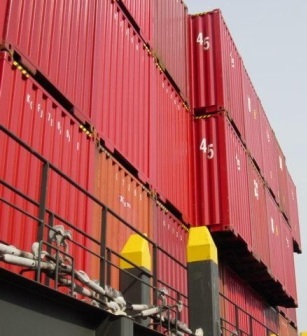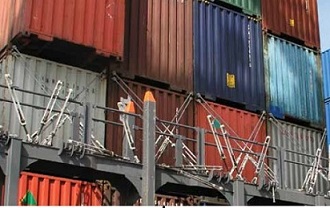
Procedure for 20',40' or 45' container stowage
The evolution of containerization was a giant step forward in carrying most general cargo at sea. At the time, it was predicted that unit prices
would fall, and cargo damage become a thing of the past.
In the early days of containerized transport, ships carried containers stowed on hatch covers, three or four high. A variety of lashing systems were in use. However, the most reliable system consisted of stacking cones, twistlocks, lashing rods and turnbuckles (bottle screws). These systems were effective in lashing containers carried on deck to the third tier.
Today, ships are bigger, and a post-Panamax container ship will carry containers on deck stacked up to nine tiers high. However, while the ships can carry containers stacked higher, the lashing systems are only capable of lashing to the bottom of the third tier containers or the bottom of the fourth or fifth tier containers when a lashing bridge is fitted. Ship design has developed, but methods to secure containers have not.
In the early days of containerized transport, ships carried containers stowed on hatch covers, three or four high. A variety of lashing systems were in use. However, the most reliable system consisted of stacking cones, twistlocks, lashing rods and turnbuckles (bottle screws). These systems were effective in lashing containers carried on deck to the third tier.
Today, ships are bigger, and a post-Panamax container ship will carry containers on deck stacked up to nine tiers high. However, while the ships can carry containers stacked higher, the lashing systems are only capable of lashing to the bottom of the third tier containers or the bottom of the fourth or fifth tier containers when a lashing bridge is fitted. Ship design has developed, but methods to secure containers have not.



